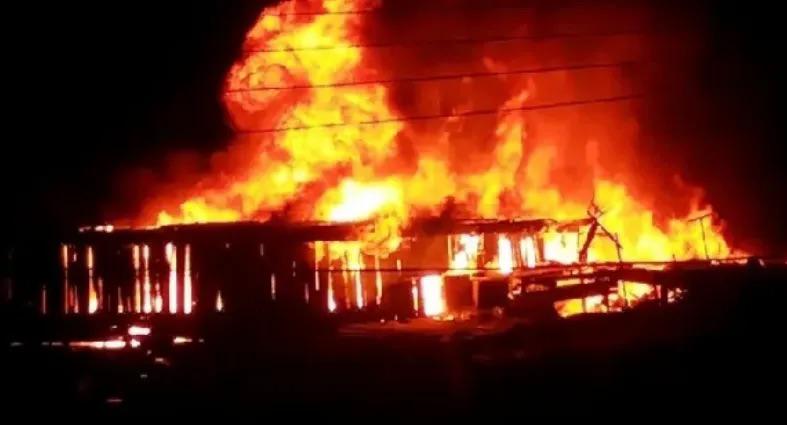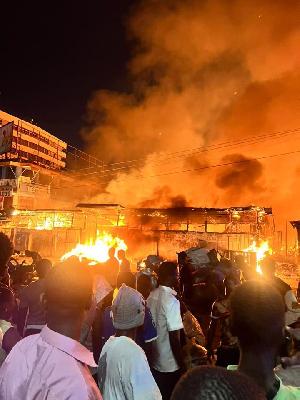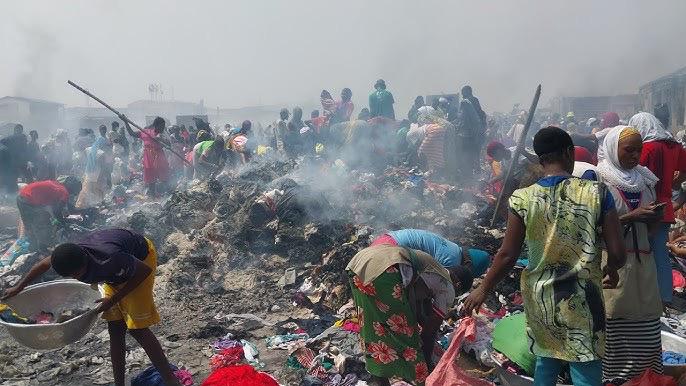Author: Peter Martey Agbeko || APR
Accra woke up to yet another devastating fire incident as flames consumed parts of the bustling Kantamanto Market, a lifeline for thousands of traders and a key hub for Ghana’s informal economy.
The fire, which occurred in the early hours of Thursday, January 2, 2024, razed dozens of shops, destroying goods worth millions of cedis and leaving affected traders in despair.
This incident is the latest in a series of market fires that have plagued the nation in recent years. Accra’s Makola Market has witnessed similar devastation, as have the Kumasi Central Market and the Takoradi Market Circle.
These recurring fires have not only inflicted economic pain on traders and their families but have also reignited questions about market safety and disaster preparedness.
The Problem with Hydrants
One of the most glaring issues in the aftermath of such disasters is the lack of accessible and functioning fire hydrants.
In many cases, firefighters have arrived promptly but struggled to contain the infernos due to insufficient water supplies.
This systemic failure was evident once again during the Kantamanto fire, as firefighters scrambled to find reliable sources of water.
The problem of defunct hydrants and encroachments around fire stations is a long-standing issue. Many hydrants in market areas are either non-functional or blocked by illegal structures.
Without access to water, the Ghana National Fire Service (GNFS) faces an uphill battle every time a fire breaks out.


Safety Measures: Gaps and Opportunities
The Kantamanto fire underscores the urgent need for a comprehensive review of market safety protocols.
While traders often bear the brunt of these disasters, the responsibility for ensuring safer markets falls on multiple stakeholders, including local authorities, market associations, and the central government.
Several factors contribute to the frequency of market fires:
• Faulty Electrical Wiring: Overcrowded markets often suffer from haphazard electrical installations, creating a tinderbox for potential fires.
• Poor Access Roads: Congested market layouts make it difficult for firefighters to reach the source of the blaze.
• Lack of Awareness: Traders are often unaware of basic fire prevention measures, and safety drills are almost non-existent.
A Path Forward
To prevent future occurrences, authorities must implement a multi-pronged strategy:
• Regular Inspections: Local assemblies should conduct routine checks of electrical systems in markets and enforce standards for safe installations.
• Functioning Fire Hydrants: The Ghana Water Company and GNFS must prioritise repairing and maintaining fire hydrants near market areas.
• Market Re-Design: Long-term solutions include redesigning market spaces to allow for better ventilation, wider access roads, and the installation of modern fire suppression systems.
• Trader Education: Regular fire safety workshops and the establishment of fire warden teams within markets can significantly reduce risks.
• Surveillance Systems: Installing CCTV cameras and smoke detectors can help in early detection and faster response to fire outbreaks.
A Call to Action
The Kantamanto fire is a tragic reminder of the need for urgent action. Beyond the losses suffered by traders, these fires affect the national economy and shake public confidence in the authorities’ ability to protect lives and property.
It is imperative for stakeholders to rise to the occasion and prioritize market safety as a matter of national importance.
As the embers of Kantamanto’s latest fire cool, the lessons must not be forgotten. Ghana cannot afford to let its markets remain vulnerable to the next inevitable blaze.
A coordinated, proactive approach is the only way to ensure that such tragedies become a thing of the past.











































